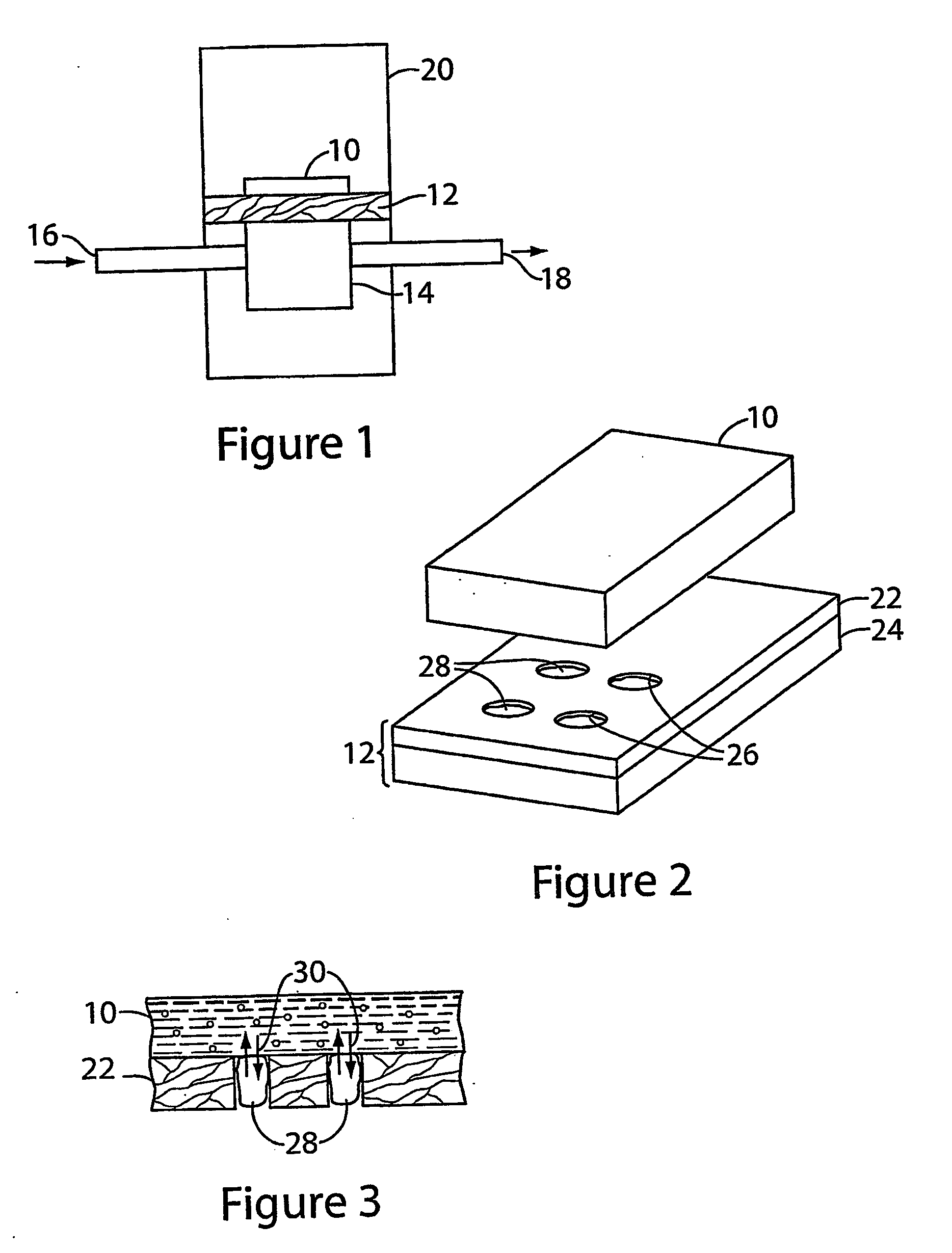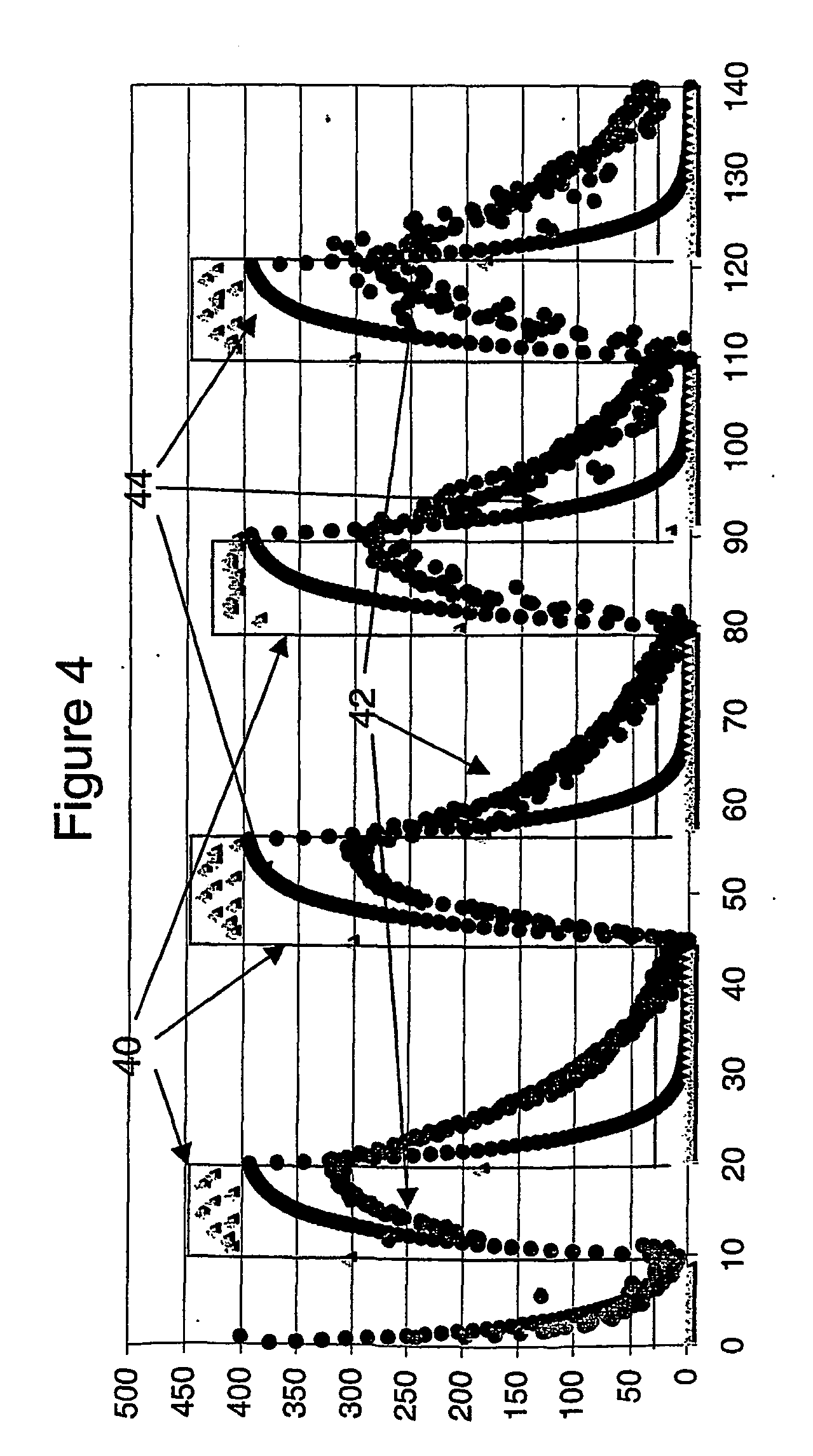Non-or minimally invasive monitoring methods
a monitoring method and non-invasive technology, applied in the field of non-invasive monitoring methods, can solve the problems of poor patient compliance, hypoglycemia, coma and death, etc., and achieve the effect of accurate results
- Summary
- Abstract
- Description
- Claims
- Application Information
AI Technical Summary
Benefits of technology
Problems solved by technology
Method used
Image
Examples
example 1
This example shows the relationship between analyte concentration within an experimental system and the signal obtained from analyte measurement using an interface contact element that is in contact with the external surface of that system. A modified Franz cell testing apparatus was used to model skin tissue containing glucose analyte in interstitial fluid. The donor part of the bottom of the Franz cell was filled with a liquid that approximated interstitial fluid, and various amounts of glucose were added to the liquid. Human cadaver skin was placed over the top of the Franz cell to provide the external monitoring surface.
More particularly, interstitial fluid is the clear body fluid found between cells in the top surface layers of skin, i.e., the dermis and epidermis. Dermal interstitial fluid glucose concentrations have been shown to be directly proportional to blood glucose concentrations (J Lab Clin Med. 1997; 130:436-441) thus measurement of the glucose level in this fluid ...
example 2
The purpose of the following example was to demonstrate the ability of a sensor constructed according to the present invention to track analyte concentration within a dynamic test system. The sensor was also assessed for its ability to detect and provide analyte concentration measurements from a changing system.
The materials and methods used in Example 1 above were employed in this Example 2; however, the concentration of the glucose analyte within the modified Franz cell (within the donor chamber) was changed over approximately ten minute intervals from 0 mg / dl to approximately 400 mg / dl and then to 0 mg / dl. The cycle was repeated once the experimental value reached the actual concentration. An electrochemical sensor / detector was used to generate an output signal in nanoamperes detected by continuous contact with a custom fabricated signal reading device. The response of the sensor to the change in glucose concentration was monitored over time and translated into glucose concent...
example 3
The following study is carried out to assess continuous monitoring of analyte concentration using the methods and apparatus of the present invention. More particularly, in vivo tests are performed on diabetic patients or healthy volunteers using intravenous lines with pumps to deliver insulin and glucose, and an indwelling sensor catheter (Biostator, Life Science Instruments, Elkhart, Ind.) to measure real-time glucose concentration in the blood. In the healthy volunteers, a low dose intravenous infusion of somatostatin is used to suppress the body's natural insulin release in response to glucose administration (Diabetes Tech. &Ther., 2000; 2:211-220). The interface contact element and sensor are applied to an abdominal site (or other suitable target surface) that is pretreated to create micro-pathways (e.g., by particle injection). The subjects do not have a history of skin problems (i.e., dermatitis, eczema, psoriasis, or keloid formation). The subjects are subjected to several p...
PUM
 Login to View More
Login to View More Abstract
Description
Claims
Application Information
 Login to View More
Login to View More - R&D
- Intellectual Property
- Life Sciences
- Materials
- Tech Scout
- Unparalleled Data Quality
- Higher Quality Content
- 60% Fewer Hallucinations
Browse by: Latest US Patents, China's latest patents, Technical Efficacy Thesaurus, Application Domain, Technology Topic, Popular Technical Reports.
© 2025 PatSnap. All rights reserved.Legal|Privacy policy|Modern Slavery Act Transparency Statement|Sitemap|About US| Contact US: help@patsnap.com


